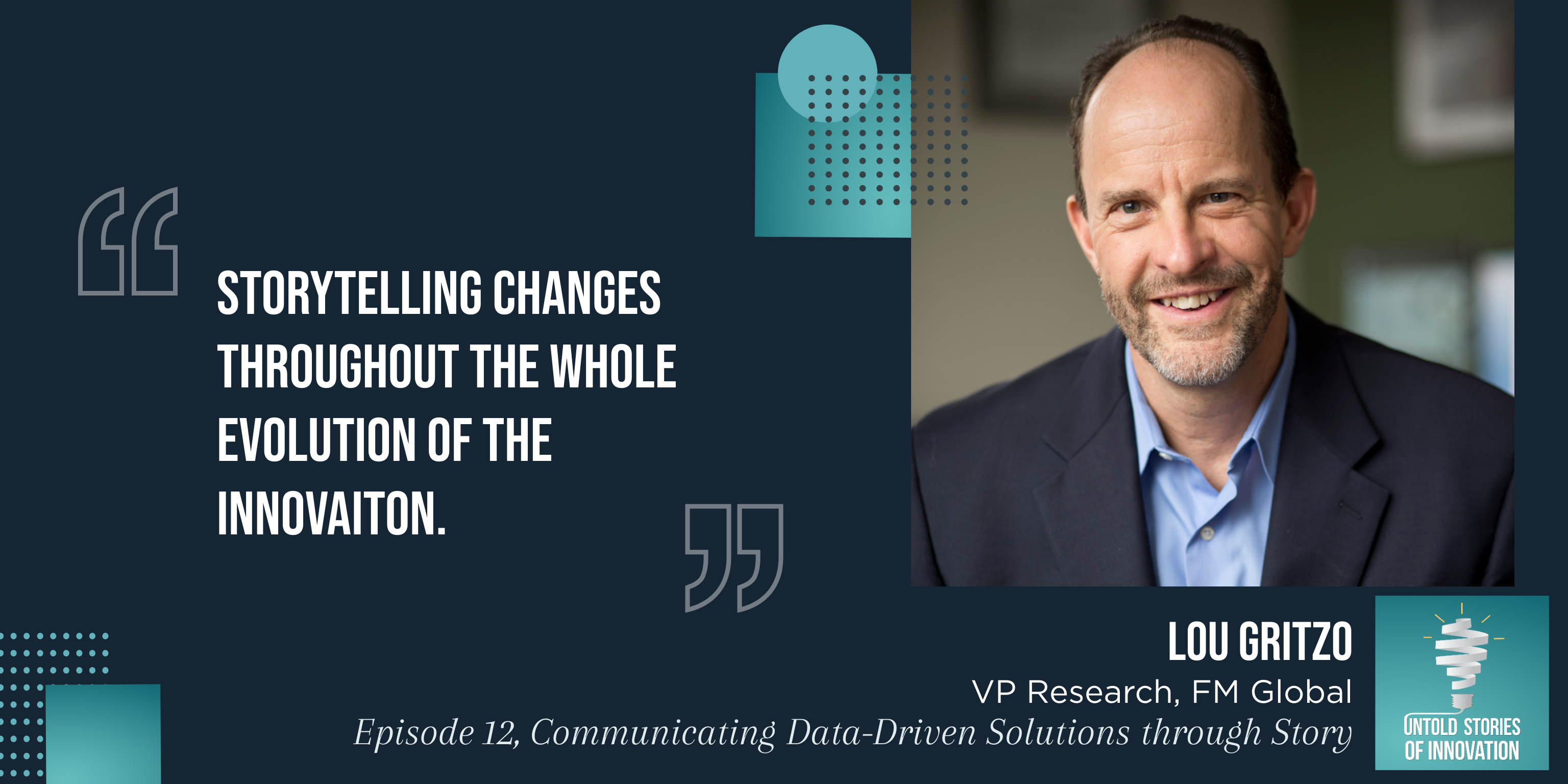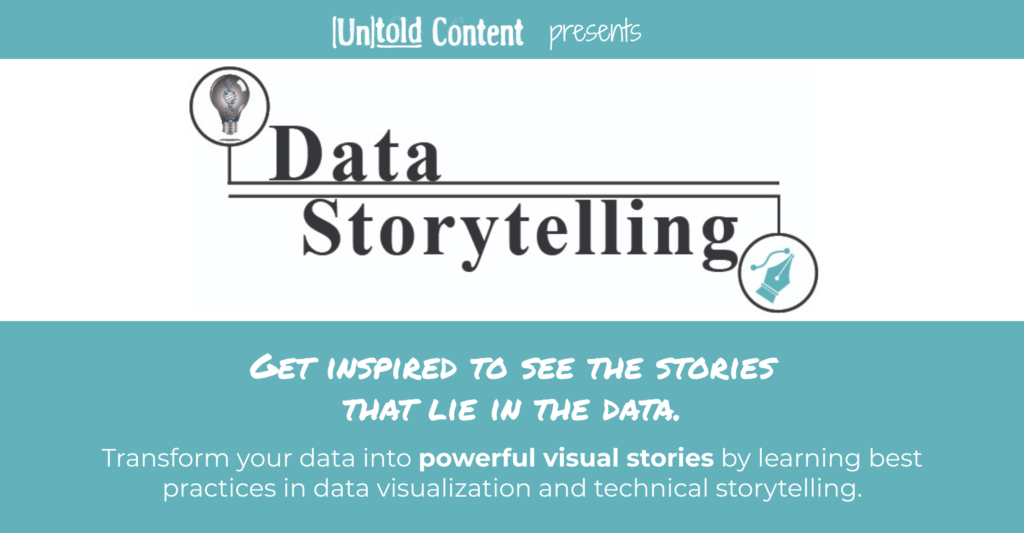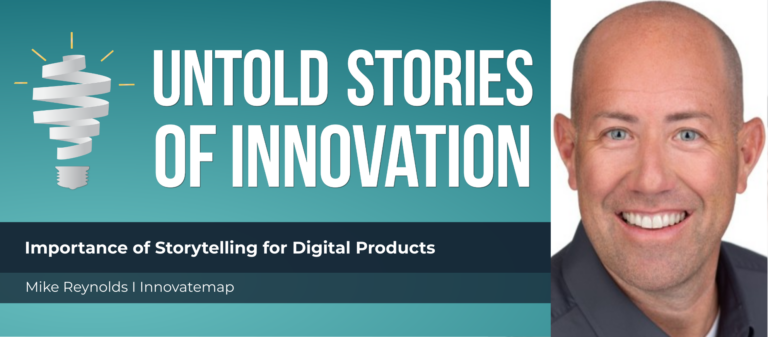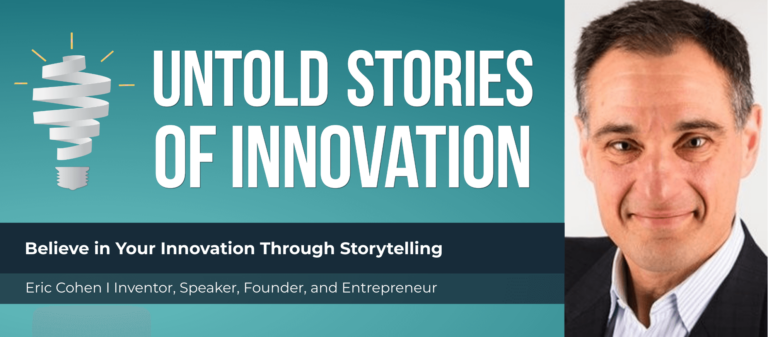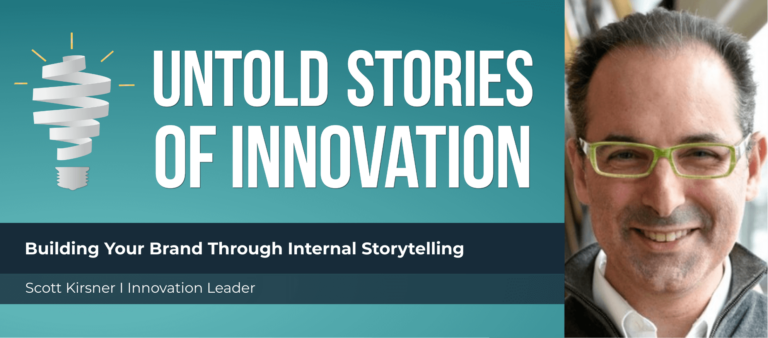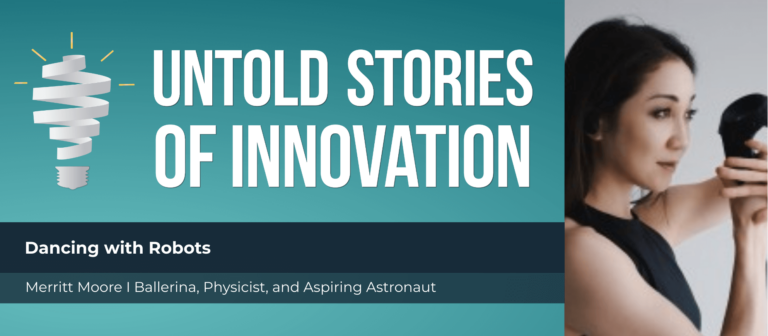Advancing Science through Story with Lou Gritzo
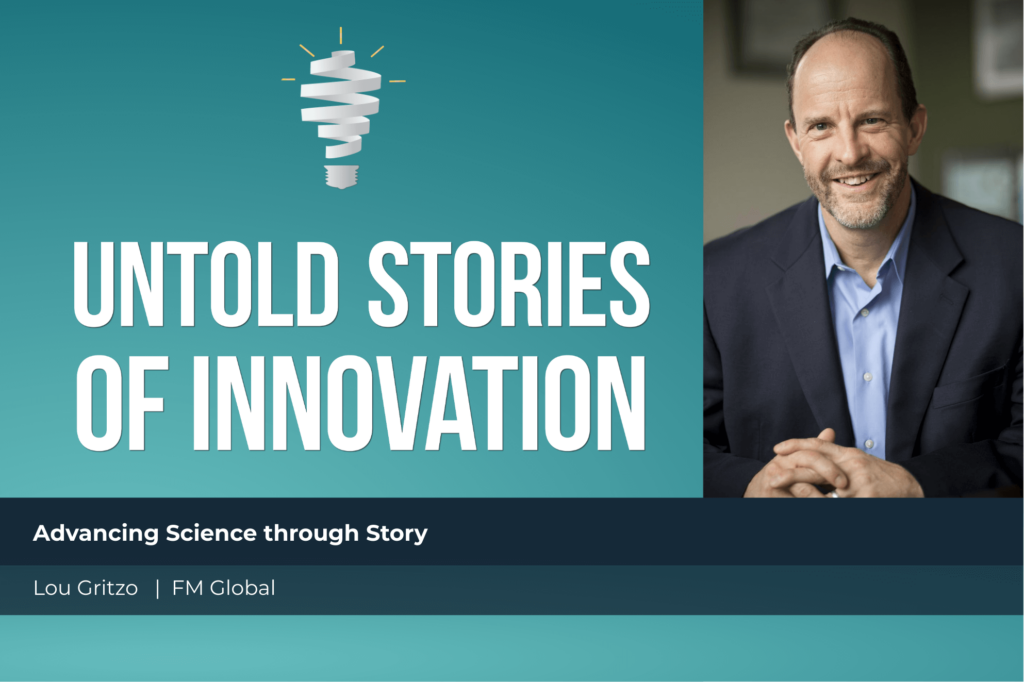
Advancing Science Through Story - Untold Stories of Innovation
“The storytelling changes throughout that whole evolution of the innovation from the front end to the tail end…and the one common factor is can the person you’re talking to put themselves in that position? And if they can, then it becomes almost immediately credible.” —Lou Gritzo, VP at FM Global
From today’s episode you’ll learn:
Why do stories matter to the innovation process? What values can be instilled in innovators who share stories? How do innovation leaders inspire creators to tell and share their success and failure stories?
Lou Grtizo, VP of research at FM Global, considers communication an overlooked but crucial skill for technical scientists and engineers. Lou shares with us how FM Global motivates their teams to view stories as a vehicle to convey the value and impact of their work. This is why at the moment of entry, FM Global new hires are required to participate in training that helps them explore and strengthen their communication skills. Lou also speaks to the importance of creating institutional memory around successes and failures. He takes an even deeper dive into this subject in his recent publication on Success Factors in R&D Leadership.
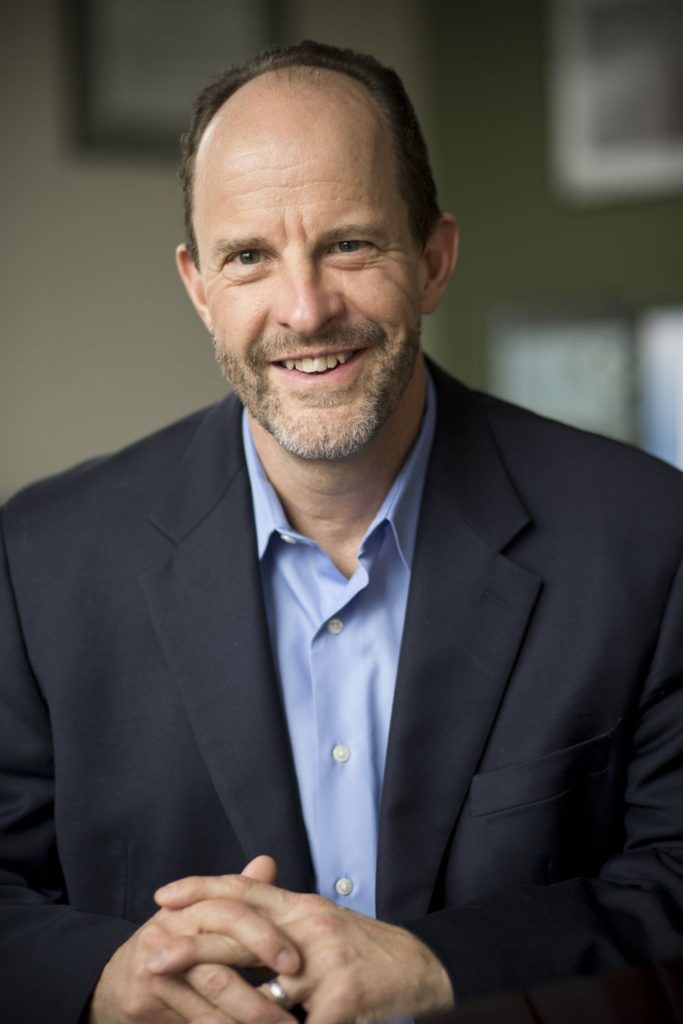
Dr. Louis Gritzo is vice president and manager of research with FM Global, one of the world’s largest commercial property insurers. He oversees FM Global’s team of scientists who have expertise in fire, explosions, natural hazards (windstorms, floods and earthquakes), risk and reliability and cyber hazards. His team seeks to understand property hazards and identify scientifically proven solutions to prevent property and business interruption loss. Gritzo also oversees activities at FM Global’s US$250 million, 1,600-acre Research Campus in West Glocester, Rhode Island, USA, the world’s largest center for property loss prevention research.
This episode, Advancing Science Through Story is powered by data storytelling training from Untold Content and Data + Science. Transform your data into powerful visual stories by learning best practices in data visualization and technical storytelling. Whether you’re a PowerBI or a Tableau person—or just want to better communicate your data—this workshop will inspire you to see the stories that lie in the data. Learn more at untoldcontent.com/data-storytelling-training.
Katie: Our guest today is Lou Gritzo. He’s V.P. of research at FM Global. And that is where he leads an applied engineering and natural science research team of over 130 scientists, engineers and technologists for the world’s largest industrial and commercial property insurance company. Lou, I’m thrilled to have you on the podcast.
Lou: Great to be here.
Katie: So can you start by telling us a little bit more about your personal story of innovation? What led you down R&D and innovation as a profession?
Lou: I believe my personal story of innovation started really when I was about to enter graduate school. Prior to that, in engineering school, you know, was kind of, you got the assignment. There was a right or wrong answer and you had to get the right answer and you got the right answer and you did well. And as I was looking at going into graduate school, you know, I put myself through undergrad school and I was trying to figure out how I might afford being able to go. And there was a National Science Foundation creativity award that my advisor, who’s the chairman of the department in mechanical engineering at Texas Tech, suggested I apply for it. He said, you know, think of something that you think would be good and maybe you should apply for this. So I did. I came up with an off the wall creative—what I thought was an innovative idea. And I interviewed for it. I made the cut and did an in-person interview. And then I had to tell my story at the interview.
Katie: What was it?
Lou: You know, how I came up with the idea. Was it my idea? Did I think it was going to work? And so I’m sitting here and outside of Dallas, Texas in a conference room full of these esteemed people from the National Science Foundation. And I had to tell my story. And I was fortunate enough to get the award. It paid for my graduate work. And I think that’s really where my journey began.
Katie: Oh, my goodness. That is a powerful moment to a young graduate student or hopeful graduate student. Do you remember how you structured that story or how you built credibility in that group?
Lou: I remember some key things about it. You know, there’s some of those things to a situation that just stick. I remember one of the guys started off kind of with a hard face and he had a burgundy jacket on. And so I was telling him about, you know, how I had come up with the idea to use this laser to affect the way that the fluid dynamics of liquid jets and the way they break up into droplets. You know, the question that opened up the opportunity for storytelling is, kind of, tell me where this came from. It’s an open-ended question, which was great. And then as I started telling him about it, like, well, you know, I was doing—I’ve always been interested in lasers, cool stuff you could do with them. And I was, you know, working on a project, senior project. And I thought I could just put the two together. And he started to smile. And I thought, OK, he gets it. You know, I’ve been able to kind of put him in a place where he looked and says, OK, this is for real. This is not a script or anything. This is actually the way it happened. And that was the way the story evolved.
Katie: I love that, you know, there are so many different types of innovation stories or ways to structure your big idea when you’re communicating it. And I think there’s that traditional 90 second, you know, 10 second opportunity you get to show impact and how your idea is going to address a problem. And then the next story pattern that emerges once you get buy in, in that first moment, I tend to notice it has more to do with process and credibility. So can you make a connection with the people that you’re pitching to and build credibility with them if it’s not already there? And sometimes taking them through your thinking and showing how it was interdisciplinary in nature or how you took something from one place and applied it somewhere else in this really creative way. That can take you to the next level, which is then hopefully, right, about implementation possibilities and how feasible the idea is. Do you see how certain storytelling tactics sort of shift depending on the stage gate process part, you know, where you’re at in the process of, sort of, coming up with and then hopefully getting to the opportunity to create the product or service or system that you’re designing.
Lou: The storytelling, I think, changes throughout that whole evolution of the innovation from the front end and the idea to the tail end or when you’re putting it into practice or seek to put it into practice and you’re ready to see that innovation pay off. And the one common factor, I think, between—and you hit on it quite early—is can the person you’re talking to put themselves in that position? And if they can, then it becomes almost immediately credible. Can I put myself in the position of—in the case of my graduate student story, how did this graduate student candidate come up with this idea? Or if I’m on the tail end of the innovation, can I put myself in the position of a customer, saying that, yes, I’m going to buy this. I think this is cool. I think this is really good. And therefore, it’s going to add value and therefore be a viable innovation and not something that sits on the shelf.
Katie: I think that makes so much sense. I would love to hear some of the innovation stories coming out of FM Global and your teams. Can you share a couple of your favorite projects or initiatives you have going on?
Lou: So a couple of things that FM Global is working on now are first, the digital transformation of industrial and commercial property holders and businesses and how FM Global can help those businesses reduce their risk, which is really the whole business model of the company. We work with clients to understand and reduce their property risk or business risk, and then we ensure the risk we can’t reduce through engineering. And the way that we do that, in some cases, is by looking at the trends of businesses and what are the things that we believe we can do that are innovative and different to be able to reduce those risks or to address a risk that they may be causing that’s completely new. And a couple examples on either side of that. One would be—a number of years ago, we realized that we could use, kind of, Internet of Things technology to do condition-based monitoring of everything from fire protection systems to key equipment so that it would be very cost effective and easy to monitor the condition of these systems. So in the case of a fire protection system, you know that if there’s a fire in the facility, that’s going to work. And in the case of a piece of equipment, you know that something is maybe not going so well and that piece of equipment may fail to work. So those kinds of concepts have come out of basic megatrends, but ultimately relate at the end of the day for FM Global as to what’s the client story behind it? Not only because our clients are our customers, but FM Global is a mutual company. We’re owned by our clients. So it all boils down to what’s the client’s story. So if I’m going to monitor a sprinkler valve to make sure it’s open, how is that going to work for a client? What’s the what’s the client story behind that? You’re going to take Fred, who used to go around and check and make sure that there’s a chain and a lock on that valve and Fred’s going to be able to glance at a screen and see that all the valves are open. So that’s a very different story for Fred’s morning. From one to the other. Or you’re going to take, you know, Sally, who used to go out and open up the transformer and take an oil sample and send it off somewhere to see if the transformer is going to work right to Sally looking on her phone and saying, oh, well, you know what? Dissolved gas is in this transformer. I need to think about doing something for it. So it’s ultimately that making it real for a client, for solutions that we’re developing that we would seek then to put into practice to reduce the business risk.
Katie: The examples you shared are so powerful because it harkens to how important it is to consider how the ultimate end user may need to be, sort of, challenged or pushed forward due to the innovation that you’re developing. And there’s sort of a power of storytelling that can help guide them to think about this innovation might transform or change forever the way you’ve always done something. But don’t be afraid of that. Here is what that will do to make your work life different but ultimately better. Do you find yourself sometimes having to navigate the role as an innovator and as innovation teams of preparing your own users and customers for what’s to come in the future?
Lou: Certainly there are cases where there’s going to be a number of iterations, maybe multiple stories or multiple exchanges, before an innovation really takes hold. And those may be a variety of different contexts in which you’re going to present the end result to a user or customer client, whoever the ultimate recipient or whoever is going to get the value from that innovation. And then, in contrast, potentially paid for that innovation or put it into practice for it to be a beneficial and useful innovation. And that may take a variety of different contexts and stories depending upon where that person is, the situation they’re in. But our experience has been that the more relevant those cases are and sometimes they may be called a case study. But that’s so boring, right? A case study, the more relevant they are to where that person is or that stakeholder is or where their business is or what they’re facing, the more successful they’ll be in terms of getting beyond the barrier of, well, I really don’t need that or I can’t use that or that’ll never work.
Katie: That’s such a great point. You know, it’s sort of, to me, it reminds me of the power of empathy. If you’re deeply connected to your customers, if you’re valuing what they value and aware of what they need, your innovation is going to be so much easier to translate and so much more likely to be successful, you know. Do you take certain approaches inside of your innovation process that enable your teams to interact closely with users and customers, or do you work closely with account managers? How do you sort of ensure that empathy is imbedded across your innovation process?
Lou: So the empathy is a really good point, Katie, and it’s, you know, feeling the pain and understanding the pain. Some of the ways that FM Global does that is the way we roll out innovations from research into our engineering workforce throughout the world and then ultimately that workforce is the one that interacts with our client. And so we will sometimes pilot ideas with clients. Again, bringing those engineers that are going to be involved in the rollout to the client and people at corporate as well as engineers in the field into the mix. The overall story, though, really starts with, I think, having—and this is fairly dry—having the data. And having done the homework to show that we believe this is something that’s going to add value. This is not a made-up problem. It’s a significant problem. We have the data and an understanding of the problem behind it. That can be a story in itself. But then the way it gets rolled out throughout that value chain for us is a little different than a consumer products company that’s looking to do market research or use design thinking to involve their customers in the development of a product.
Katie: What that makes me think about is data and the way that it can sometimes get in the way of generating buy in. In other ways, it can absolutely be the thing that brings everybody at the boardroom table or in the organization to get behind something. How do you find yourselves striking the right balance between sharing too much data or not enough evidence?
Lou: The right balance of data—and I would say situational characterization, in other words, we believe this, that’s the other thing—is strongly, at least it’s been my experience, Katie, it strongly depends on the situation. It’s very easy, if the data that are being used are not well understood, for it to become a complete side bar, sidetracked, distractor, detractor, whenever you want to call it. It just moves everything away from the value of the idea and the innovation potential there to, oh well no, that’s not quite right. Well, what about A, B, C or D? So the data have to be tailored to, I think, a fairly compact, concise picture of the value proposition of the innovation and then sometimes but not always the level of feasibility.
Katie: Sure.
Lou: We believe we can be successful at this because of A, B, C. Because we’ve done something else similar and we can look at our success rate there. We can demonstrate success rate here or we have the right partner that has done some things. So I think that when you consider putting data out there, ideally, it should be in the context—in my mind’s eye—of the perfect scenario of the story itself. So this is how this happened. There were questions that came up. We went to the data to answer these questions and the data show us the answer to the question is A or it’s B or it’s this or it’s that. Data should always be presented, from my perspective, in the context to a question being asked, which then moves it from just dry information to the way to answer a question.
Katie: Yes, it makes the data impactful, contextualized, it helps people activate against it. I love every point you made there, Lou. So how do you notice that—is storytelling or pitch practice or communication skills—is that something you talk about much inside of your innovation teams?
Lou: Communication is extremely important for technical people and innovators. It’s, I say, a vital organ. We have a variety of ways that we work to develop communication skills at research at FM Global. Every new employee. Typically we’ll hire people with PhDs in engineering sciences or physical sciences degrees. They go through a one-day innovation bootcamp.
Katie: Awesome.
Lou: Where they are there with their peers. Typically other people that have joined the organization within the last 6, 9, 12 months and we have a bootcamp trainer that we’ve worked with extensively with the public relations and newscaster background, and she comes in and works them through the basics of communication. They do dry runs; they do case studies with each other. And then for our staff whom will require additional interactions either with clients or with interest groups or codes and standards committees or policymakers. Then we have a more extended speakers’ alliance, speaker training multi-session course that they go through where they learn some skills, put them to practice over a period of time, then come back and meet again with their group and the trainer to review those skills and how they put them to practice and then work on the next ones. So this strategy is all based on overcoming the dry, scientific communicator syndrome.
Katie: [Laughs] sure.
Lou: And then also overcoming the potential for the—let’s call it training. But the development experience to be. I sat in a classroom. I had a bunch of stuff told to me. And then I went back and did things the way I did them before the next day.
Katie: Yeah. Exactly. The fact that they’re constantly building into those skills is so critical.
Lou: It’s remarkable to see the changes that some early career staff have made in terms of their communication skills. Just completely remarkable. From the dry, you know, view graph with data and a bunch of words and a bunch of details to, you know, she or he standing up there saying, so, you know, what about this? And we have one staff member that basically got everybody very effectively by saying. So I’ve looked at the numbers, I’ve reduced the data and I’ve decided this is absolutely not going to work. My project should be immediately cancelled.
Katie: I love it. Yes.
Lou: That was a talk that she gave on April Fool’s Day.
Katie: Oh, my goodness. You’re kidding. Oh, I was about to launch into the importance of sharing failure narratives, too, and having storytelling techniques for escalating and killing projects. Although that’s a really good trick to play on your coworkers on April Fool’s Day.
Lou: Talk about an engaged audience, right. What a way to engage an audience.
Katie: You know, you’ve published research on the success factors that are present inside of successful research and development leaders. And I loved reading some of your publications on that topic. And, you know, it’s interesting that oftentimes technical leaders, at least in terms of the way they’re perceived by other people in their organizations, they’re sometimes perceived as lacking those kinds of skills, interpersonal skills or communication skills. Could you speak a little bit to those findings and why communication and storytelling now have to be more critical than ever to people who are on technical paths and want to rise up into leadership roles.
Lou: The success factors research that was done a number of years ago and published was a comparison of R&D leaders to leaders in other business functions. And so that research looked at how R&D leaders can be successful and how they’re measured relative to others that are successful in the company. I believe the research showed that R&D leaders, because of their technical background and because of just the typical stereotyping—that they are going to be dry, they are going to be boring, they are going to be long winded—have an even greater challenge to overcome that implicit bias, to get in the place where they’re effective communicators and where they can immediately, as soon as the discussion starts and they walk into a situation, become not only effective but, in some cases, get over a place where they started maybe behind their peers in another business function.
Katie: Yes. And so, you know, I think training experiences and professional development at the moment of entry into an innovation team is so critical. And then those follow-on touch points, when you shared that example of seeing that transformation in a young—you know—in a new hire and the ways in which they’re able to share their pitch or their concept in a much clearer way by the end of that training. It reminds me of at Untold were oftentimes providing innovation storytelling training workshops, and it can be so uncomfortable and such a vulnerable thing to do when a scientist or an engineer stands up at the beginning of the day and provides their, you know, 90 second, five minute pitches and to create a safe environment where we can provide feedback and build into each of those people and to see how those projects and initiatives are transformed in terms of how they’re communicated by the end of just one day is amazing to me. But it does take a level of vulnerability and a willingness and an openness to learn. We share a lot of epic examples across industries of innovation stories that are powerful and that are resonant and that work well both internally and externally to customers but also kind of creating buy-in internally. I’m curious if you could paint a picture for us of what internal buy-in looks like at FM Global when one of your creators has a great idea. Who do they have to turn to? Who needs to buy-in to their innovation story?
Lou: Internal buy-in can happen in a lot of different ways. Specifically, within the FM Global research team, there’s the initial buy-in of the people that are going to tackle a challenge with the mission of the company and it boils down to an objective. We do have open calls for ideas, but even those are tailored around specific business objectives to make sure that they remain relevant.
Katie: Sure.
Lou: The buy-in has to be that that’s something. Yes, I can see that’s relevant. I can see it’s important. In some cases those objectives are well presented in the form of a story themselves. You know, here’s the challenge our clients have. Imagine if you’re a client and you have this challenge; how would you deal with that? What’s your approach to dealing with that? And how can we at research within the company—how can we solve that problem? Then there’s the typical kind of two-pronged buy-in, at least from one perspective of… does it matter? And will it work?
Katie: Sure.
Lou: If it doesn’t matter, there’s no buy-in. And if you can’t convince me it’s going to work, there’s no buy it.
Katie: Sure. And you also spoke to alignment, too. You know, if it’s not aligned with the sandboxes that we’ve sort of strategically set. You know, that at least helps provide a playing field or some boundaries around what the most critical priorities are for innovation. Right.
Lou: Very much so. And alignment is important. But a line that can sometimes be tweaked.
Katie: Yeah.
Lou: I think there’s some opportunities to realign or to align on the fringes. As long as the difference between the innovation and what’s being pursued and the traditional view of alignment is not too far off. It’s still got to be within the broader mission space.
Katie: What are some of the challenges or some of the things you would recommend not to do when you’re trying to get buy-in for a response or a solution to a technical brief?
Lou: The first thought that comes to my mind on bad advice is pretend that everything is soft. Pretend that everything is done. Acknowledging weaknesses or acknowledging soft spots and how they’ve been considered and been managed is really important.
Katie: Yes. Yeah that’s again a vulnerable thing to do, but it’s so important to—actually it can be a credibility builder. When you say, I haven’t figured this part out yet. I need help with this.
Lou: Or yes, you know, I know that this needs to be addressed. I’ve got a plan to address it and I think it’s quite going to work. And these are the things that I’m going to do. I had one sponsor in a prior function, a prior job that I had, where the project had not gone well. And so I’m going to a high-level sponsor, basically, a high-level person, Pentagon. And I’m walking in and I’ve got to tell this person it’s not coming together.
Katie: That’s a tough day.
Lou: I thought, well, that’s where we’re probably going to lose this one. But that’s what we’re going to do because that’s the reality of it. And we don’t want to lose our credibility or integrity. And the story behind this one is I presented it. Here’s what we’re seeing in the models. Here’s what we’re seeing in the experiments that are being done. They’re not in agreement. This is going to be an opportunity. One or the other is going to be improved at the end of the day here. And here’s our plan that we’re going to pursue to address this issue. And I’ll never forget his response. It was very much, you know, I sit in this chair all day long and have people come in and tell me how everything’s perfect and everything’s right. And he says, I know better than that. I’ve been there. I’ve done research. I know it’s not alright. Said this is good. And it should continue. And that was the end of it.
Katie: That’s incredible. I’m working with a research team who’s focused on brilliant failure out of the Innovation Research Interchange. And we’re hoping to publish a manuscript on the topic, you know, in research technology management. And boy, that’s the theme of the entire publication—is can you learn rapidly from things that don’t go well and do so at the most reasonable cost you can? And if so, that’s a brilliant failure. And, you know, I think there’s an element of if you’re not failing, then you’re not taking risks.
Lou: Absolutely. The traditional mode of failure. I set out to do A and B and I’m not gonna get there. I know I’m not going to get there. I’ve actually kind of encouraged within our own team not to consider those failures, to consider those as learning opportunities and opportunities to morph to something that may even be a greater value, which it’s hard to call that a failure. But, you know, when you look at it from the very beginning point to say this is where I’m going to end up, and then indeed you’re not going to end up there.
Katie: I totally agree. We need some new rhetoric around failure. I’ve even seen some organizations eat failure cake. When an idea gets rejected or doesn’t work out, they’ll literally bring a cake in that sort of represents the project and eat it together. And, you know, it’s sort of—
Lou: A ceremony around it, huh.
Katie: Yes, exactly. But it kind of creates, in terms of culture building, it creates a culture that is willing to talk about it. You know, and not just be afraid to—if we’re too afraid to talk about our failures, then we’re too afraid to learn from them, too. Where we’re missing out on that learning.
Lou: I fully agree about the potential to miss out on learnings. And just to give a specific example around those things. In certain areas, you see the same problems come up over and over again, and as people change and go to different roles, you see the same problem has a tendency to get worked by different people at a different point in time. And unless those learnings are documented and there’s the opportunity for others in the future to go back and review those same mistakes or the same path will be pursued. Basically, we’ll be repeating work for an issue that the learning has already been achieved in the past. But it wasn’t documented because somebody thought it was a failure.
Katie: That’s right. Yes. So institutional memory building, whether that’s documented in writing, whether it’s conversational, whether leaders tell some of the same stories over and over to keep that memory alive, it’s critical to do that for successes as well as failures. And in order to help, you know, keep everyone on the same page about the directions we need to move in the future and why we might not choose certain paths because we may have already gone down them in the past.
Lou: So this documentation of past learnings also provides the opportunity to build upon them from a different perspective, which could be an innovation in itself.
Katie: Yeah, that’s when ideas come back off the shelf. When you have the opportunity to pull an idea that was shelved and maybe someone new in the organization or someone from an adjacent part of the organization or even outside sees it in a different way. And wouldn’t you know, now it’s the right time to pull it off the shelf and look at it in a new way.
Lou: Great example of pulling something off the shelf and looking at it in a new way, or the other option on top of that even is looking at it in a new way and deploying new technology, which may allow it to be evaluated in a new way or be evaluated in a slightly different way that makes it more feasible.
Katie: Completely agree with you Lou, could you offer some advice to innovators as they prepare to convey their great ideas? You’ve shared so much. But if you had to sort of pick your top pieces of advice, what would you say?
Lou: I think the most important thing for innovators to think about as they prepare to convey their great ideas is the three big things. Audience, audience, audience. Who are they going to talk to? What do they care about? What are the kinds of things they’re most likely to relate to? And how can you present what you’re doing, in a story that’s engaging, without leaving big open spaces—they get filled with something you don’t want them to be filled in with—but with enough detail to where they can put themselves in that place.
Katie: Yeah, I love that. I love the visual metaphor of thinking about how to transport your audience. And again, it comes back to empathy, I think. And I’m so grateful for all of the insights that you’ve shared today. I know that listeners will get so much out of this. Everything from creating institutional memory around successes and failures to using an opportunity at the moment of entry for new hires to explore and strengthen their communication skills. This has been such a wonderful conversation, Lou. Thank you so much for being here.
Lou: Thank you very much. Katie. I appreciate the opportunity. It’s an exciting topic in terms of how to communicate innovation ideas and innovation value and storytelling is a great way to do it, so it’s been a great conversation. I appreciate the chance to discuss it with you.
You can listen to more episodes of Untold Stories of Innovation Podcast.
*Interviews are not endorsements of individuals or businesses.
